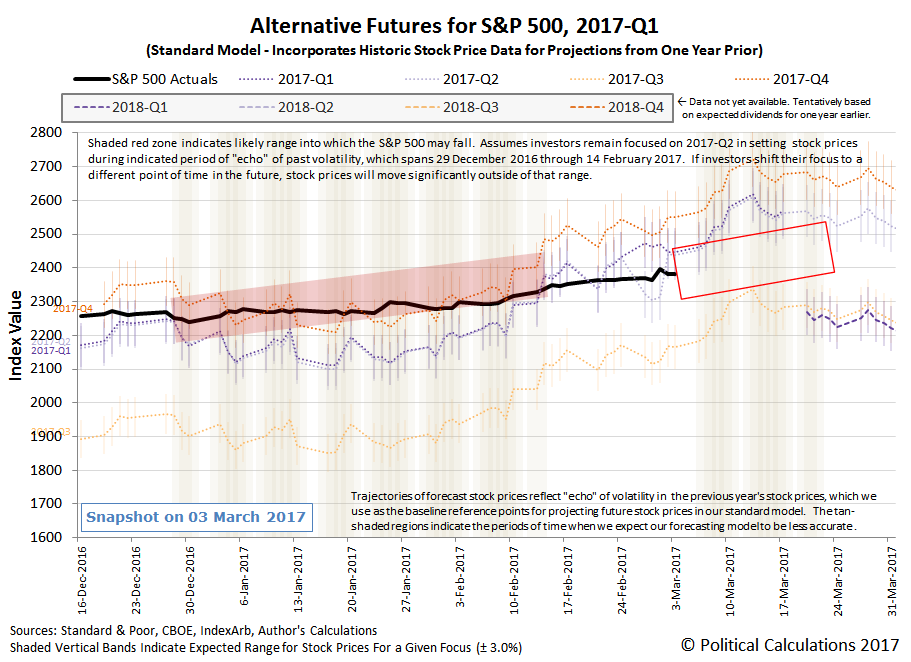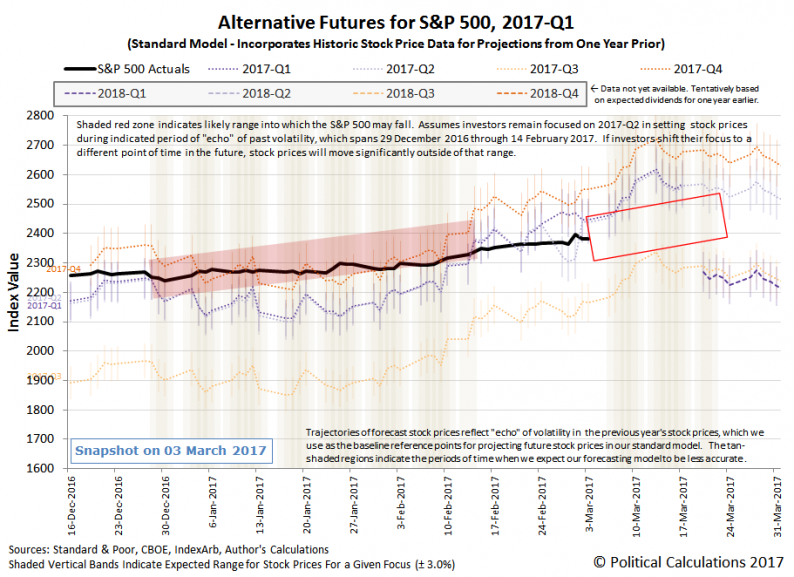For the S&P 500, the first week of March 2017 was about as eventful as it could be thanks to a strong attempt by Fed officials to shape future expectations ahead of their two-day meeting beginning on 14 March 2017. We would argue that through their concerted efforts, they succeeded in shifting investors to focus upon 2017-Q1 instead of 2017-Q2 to coincide with the timing of their next rate hike.
Alas, because the expectations for changes in the rates of dividend growth for the current quarter of 2017-Q1, which still has a few weeks left in it, and the upcoming quarter of 2017-Q2 are nearly identical, that shift in focus didn’t do much to significantly affect the level of the S&P 500, which continued to track along near the bottom of the likely range that our dividend futures-based model has projected for the two quarters.

Last week was also interesting in that we had an anomaly that affected the CBOE’s dividend futures contracts for 2017-Q1 (DVMR) and 2017-Q2 (DVJN). On Monday, 27 February 2017, the value of 2017-Q1’s dividends per share increased by 3.5 cents to $12.70 per share, while the value for 2017-Q2’s dividends per share decreased by the same amount to $11.83 per share. The anomaly then lasted until Thursday, 2 March 2017, when the gap between the forecasts for both quarters closed up once again. You can see the effect that these seemingly small changes had upon our dividend futures-based forecasting model for the trajectories shown for both 2017-Q1 and 2017-Q2 during the past week in the chart above.
We suppose that should teach us to not complain about the two values having otherwise been nearly identical since mid-January!
We recognize this change as an anomaly, first because it soon evaporated within a matter of days, and second, because stock prices didn’t respond as our theory would suggest for investors suddenly shifting their forward looking focus from 2017-Q2 to 2017-Q1 during the last week. Had it been the real result of a significant change in expectations for the future for dividends, the upward movement for 2017-Q1 coupled with the sudden investor focus on the quarter would have sparked a much larger rally in stock prices.













Leave A Comment